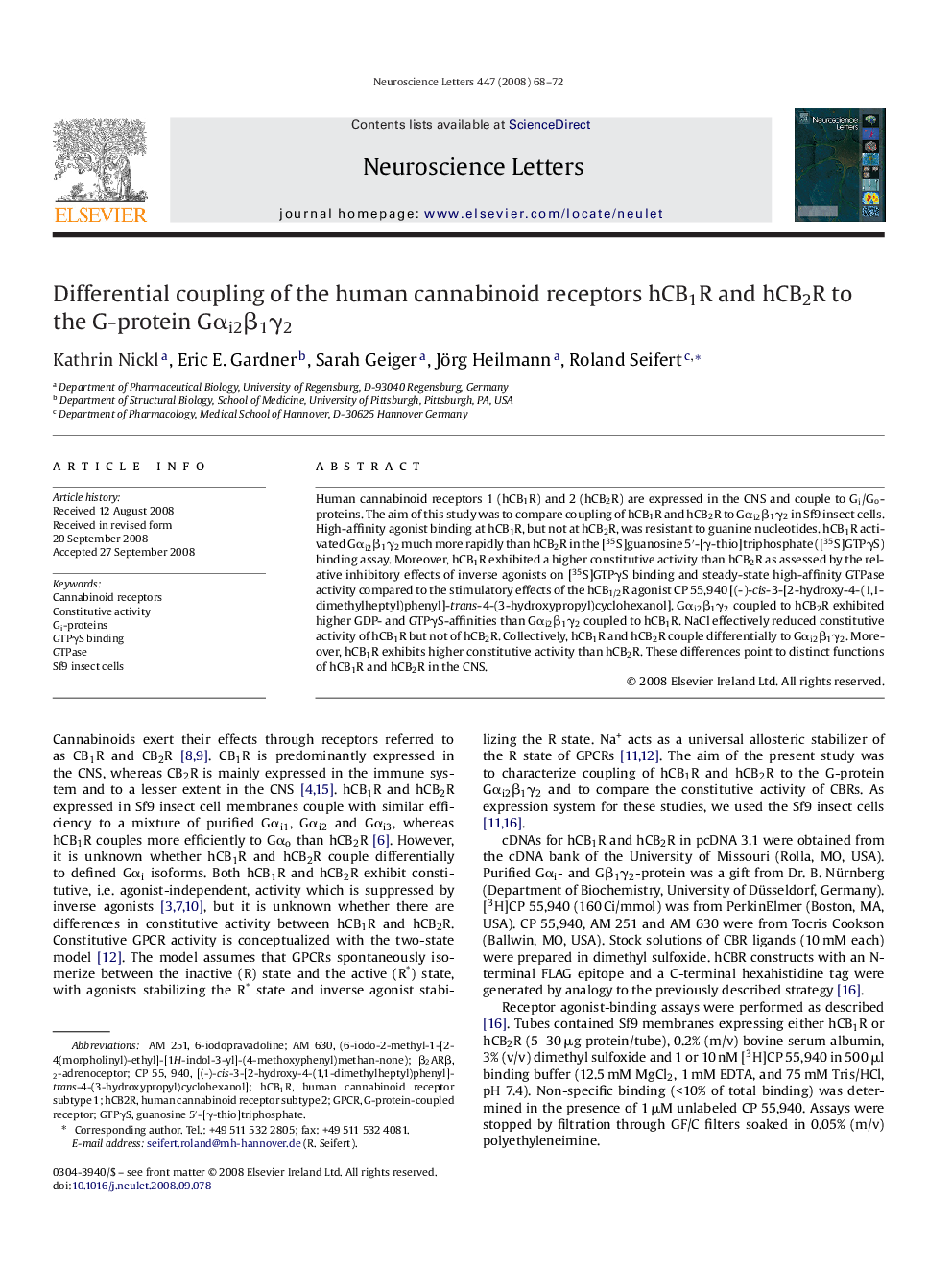| Article ID | Journal | Published Year | Pages | File Type |
|---|---|---|---|---|
| 4347849 | Neuroscience Letters | 2008 | 5 Pages |
Abstract
Human cannabinoid receptors 1 (hCB1R) and 2 (hCB2R) are expressed in the CNS and couple to Gi/Go-proteins. The aim of this study was to compare coupling of hCB1R and hCB2R to Gαi2β1γ2 in Sf9 insect cells. High-affinity agonist binding at hCB1R, but not at hCB2R, was resistant to guanine nucleotides. hCB1R activated Gαi2β1γ2 much more rapidly than hCB2R in the [35S]guanosine 5â²-[γ-thio]triphosphate ([35S]GTPγS) binding assay. Moreover, hCB1R exhibited a higher constitutive activity than hCB2R as assessed by the relative inhibitory effects of inverse agonists on [35S]GTPγS binding and steady-state high-affinity GTPase activity compared to the stimulatory effects of the hCB1/2R agonist CP 55,940 [(-)-cis-3-[2-hydroxy-4-(1,1-dimethylheptyl)phenyl]-trans-4-(3-hydroxypropyl)cyclohexanol]. Gαi2β1γ2 coupled to hCB2R exhibited higher GDP- and GTPγS-affinities than Gαi2β1γ2 coupled to hCB1R. NaCl effectively reduced constitutive activity of hCB1R but not of hCB2R. Collectively, hCB1R and hCB2R couple differentially to Gαi2β1γ2. Moreover, hCB1R exhibits higher constitutive activity than hCB2R. These differences point to distinct functions of hCB1R and hCB2R in the CNS.
Keywords
Related Topics
Life Sciences
Neuroscience
Neuroscience (General)
Authors
Kathrin Nickl, Eric E. Gardner, Sarah Geiger, Jörg Heilmann, Roland Seifert,
